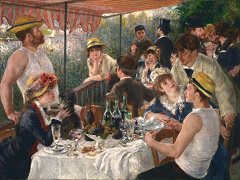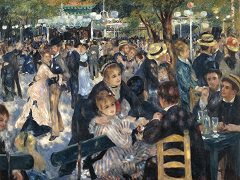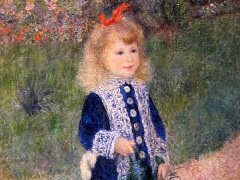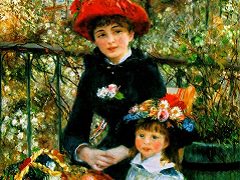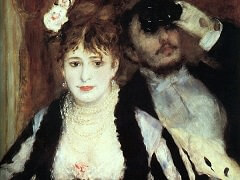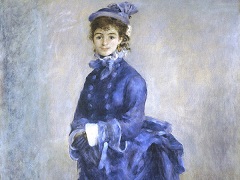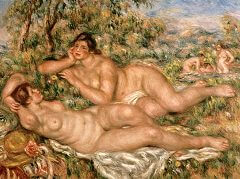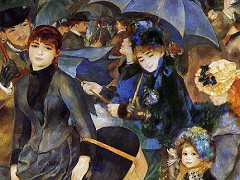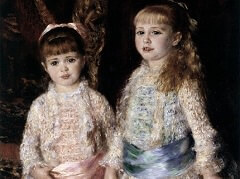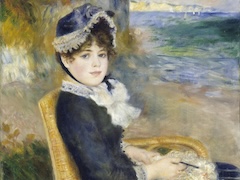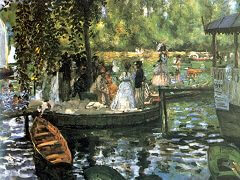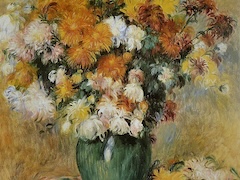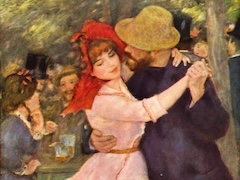Diana - by Pierre-Auguste Renoir

Renoir tells that one day a man came to buy this canvas, but they couldn't come to terms, for the prospective buyer wanted only the deer. The rest of the picture did not interest him!
The buxom lady became a Diana only through expediency. Renoir was a canny, realistic man as well as an artist. Here is what he said of this picture:
I intended to do nothing more than a study of a nude. But the picture was considered pretty improper, so I put a bow in the model's hand and a deer at her feet. I added the skin of an animal to make her nakedness seem less blatant - and the picture became a DianaV He had his eye on the Salon of 1867, but the painting was rejected.
The canvas is one of the few on which Renoir employed the palette knife; it was at the time when the artist admired the thick impasto pigment and the prodigious realism of Gustave Courbet. The picture is clearly a studio piece: the lighting of the figure is harsh and the setting artificial.
Renoir is still trying to find himself, but his instinct and sensibility are sure. Again we have the cool silver-blue tones (one may recall that while Renoir paints cool at the start of his career and warm later, the reverse is the usual devel-opment). Throughout the painting there is a pronounced interest in varied textures, substances distinct in color, value, and rendering. Paint quality ranges from the smooth, unbroken sky to the enriched and dazzling flesh, then on to the more vigorously painted rocks, and finally to the broad, loose flecking of the foliage.
In a general way, the cool tones move from the upper left to the lower right corner, while the warmer tones are on the opposite axis. The bright band with which Renoir hoped "to make her nakedness less blatant" is part of the warm axis, but its lines follow the cool direction. There are many subtleties the observer will discover: this is one of the great figure paintings of nineteenth-century realism, and its qualities are not easily exhausted.

